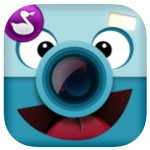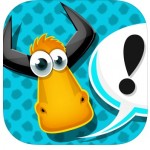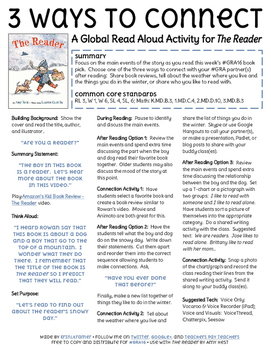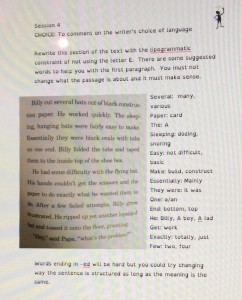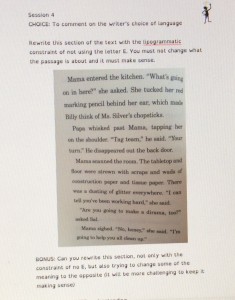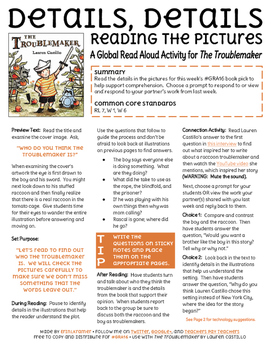How does Gray describe war? Give evidence from the story.
2016 Books
Week 3 – BFG
Shelly Sanchez Terrell aka Ms. Sanchez
I am a teacher who has taught learners 2 to 80 years-old in over 20 countries. However, my greatest joy is in being the mama of Rosco the pug. You can find us on social media #RoscothePug and @ShellTerrell.
Activity:
1. Students take on the role of one of the characters and tell what happened before or after the story. The students recreate their stories using http://LittleBirdTales.com
or..
2. Students draw one of the characters and have the character retell the events of the story from that character’s point-of-view using Blabberize.com or a free app like Tellagami.com, YakIt for Kids (iOS), Toontastic, and Chatterpix for Kids (iOS).
Week 3 – The Reader

Welcome to week 3 of the challenge!
Click on the image below to download Erin Kramer’s resource.
Pax- Week One-Question #2
How did Peter’s memory of his mother’s tulip garden help him decide to go find Pax?
Pax – Week 3
Lipograms
by Viki Allen
I was introduced to the idea of Lipograms when I went to a conference, something I’ll admit I had never heard of.
A lipogram is a constraint that is used when writing and can often be developed as a task for deepening the challenge for higher attainers. The concept is very simple: a piece of writing is produced in which a particular letter is omitted. The example we worked on during the course (and I tried out with my class on return to school) was of Humpty Dumpty, rewritten without the use of the letter a.
So:
Humpty Dumpty sat on the wall
Humpty Dumpty had a great fall
All the King’s horses and all the King’s men
Couldn’t put Humpty together again
Became:
Humpty Dumpty rested on the structure
Humpty Dumpty tumbled off the structure
Every one of the King’s horses, followed by every one of the Kings’s men
Couldn’t return Humpty to his previous condition.
When I asked Alan for a suggestion of activity for the GRA, he suggested that we try writing lipograms for a section of the text, and to enhance this further, to read the version we have written alongside the printed original in order to see where changes have been made.
It has also been suggested that we video or audio record these reading and share them so that children can hear different accents/voices from around the world. This could be done using Write About This.
Here’s an example that I used with my class (differentiated to accommodate the ability of my students).
(The quality of these pictures is better if you click on them)
I was first introduced to Lipograms when I was fortunate enough to travel to Manchester for a conference on ‘Developing writing in the Modern Classroom’ led by Alan Peat and Lee Parkinson. Over the last 18 months these two have had a significant impact on the teaching of a range of subjects through their innovative use of a combinationof high and low tech strategies to engage learners.
Lee Parkinson’s blog is inspirational for anyone wanting to use iPads and digital technology to raise standards. I have used many of his ideas over the last two school years to great effect and would highly recommend reading his blog.
http://mrparkinsonict.blogspot.co.uk
Alan Peat is a former teacher, now a writer and speaker who has written a number of books and successful apps to develop the use of literacy skills. I first came across him through Twitter and was introduced to his ‘Exciting Sentences’ which I introduced to my school and have been embedded in our practice for over a year. You can find out more about them from his website.
Enjoy!
Viki Allen, Tollgate School, Eastbourne, UK
Pax-Week 1 Question #1
How did Pax know there was something wrong with Peter? Give evidence from the book.
BFG – Week 2
Sketchnoting
by Zeina Chalich
Sketchnoting builds a connection between verbal and visual components. It is a personal form of note-taking that activates the brain in the process much the same as doodling. Doodling is a way of thinking, of drawing information around a thought process.
TASK
Make visual notes (sketchnotes) about the main events from a chapter in the book. Take photos and upload your notes to the blog or use any available apps to make your visual notes. Label which chapter you are sketching about.
Consider.. Who? What? When? Where? How? Why?
What visual representations will best describe…
* The sequence of events?
* The emotions of the characters?
* The impact of what happened?
* The text you will use?
TOOLS
Paper & pencil or black felt tip pen
OR
Ipad apps – Bamboo Paper, Paper53, Bookcreator
(It’s easier to do your first sketchnote on paper)
EDUCATOR RESOURCES
Sketchnoting – Intelligent Notetaking – explains my passion for sketchnoting, what and why we sketchnote with basic shapes and examples to support beginners.
Sketcho Frenzy – Basics of Visual Notetaking – explains fundamentals of text hierarchy, words as images, and the structure of sketchnoting.
Zeina is the Leader of Learning & Innovation at a Primary school in Sydney. She loves sketchnoting, lego and coding on her ipad. Zeina runs the makerspace (you can check us making at #stfmaker) at her school where students come to code Sphero Robots, create things with Littlebits and Makeymakeys, create amazing structures in Minecraft and sometimes even cardboard! Zeina loves connecting and collaborating with teachers from around the world on twitter. She would love to share your sketchnotes with her followers @ZeinaChalich
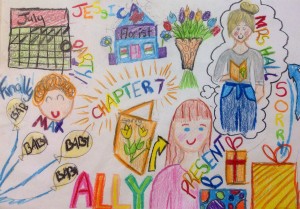
This is an example from our GRA collaboration in 2015.
Fish in a Tree by Zanna
Week 2 – The Troublemaker
Author Study: Lauren Castillo
Our students in Australia loved Nana in the City in week 1. We very much look forward to reading The Troublemaker this week.

Download this amazing resource by Erin Kramer by clicking on the image below.
Who do you think the troublemaker is? Include details from the story to support your opinion.
Notice and Note
Notice and Note for Fiction Signposts enable students to closely read a piece of literature and find deeper meaning. Each of the six signposts allows students to STOP when they see each in a text and answer an anchor question. This often leads to a better analysis of the text, and enables students to make predictions regarding the conflict and theme.Thanks to Kylene Beers and Bob Probst for introducing this wonderful strategy. Attached is a padlet for a Notice and Note Signpost Hunt for Pax:
I have also attached anchor charts because most teachers use some form of these to teach them.

